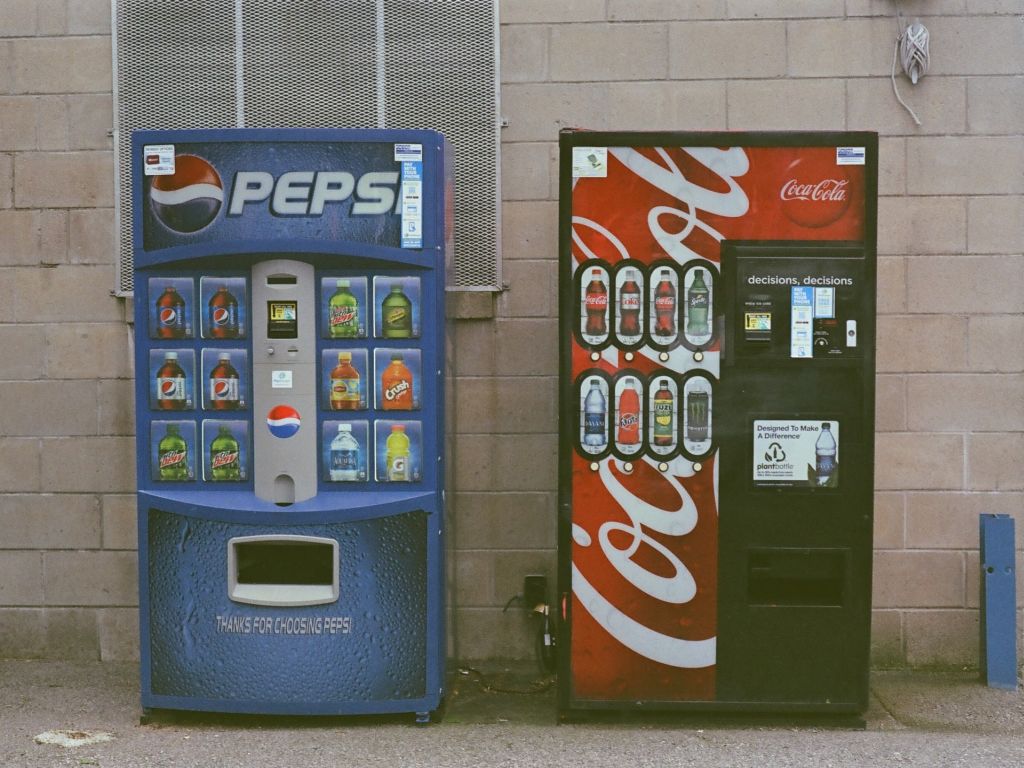The market leader strategy is one of the competitive strategies developed by Philipe Kotler. It is worth understanding this concept using examples and checking if such a mechanism fits your company?
- What is the market leader strategy?
- Characteristics of a market leader strategy
- Market leader strategy based on the example of Coca-Cola
- Is this strategy for you?
The market leader strategy is used by the companies that have the strongest position. Less powerful competitors (contenders) may try to knock the leader off its pedestal. This forces the leader to take specific actions, because, as the Chinese proverb says, peace must be consciously maintained, and stagnation must be consciously ended, otherwise it will continue. In other words: the lack of action on the part of the leader will be used by the contenders, so even in times of peace and prosperity, you must consciously shape your position. You can read about how to do this later in this article.
What is the market leader strategy?
The strategy of the market leader is not only to maintain its position. Marketers know, for example, that market leaders are conducive to expanding the market. The company with the strongest position in general can easily win another million customers or thousands of orders. The challenger therefore gains less from expanding the market. Especially that the expansion of the market should take place when the product is in the maturity phase and the existing market is saturated. These features most often characterize the products of the market leader.
Leaders are expanding the market
The strategy of the market leader is therefore primarily to expand the market. This can be done by acquiring new customers, new uses for a product or increasing customer lifetime value (e.g. by increasing the number of uses of the product per person).

The expansion of the market can be easily illustrated by the example of foreign expansion. It is usually decided by the market leader when the market in the country of origin is already saturated - the product is in the maturity phase. This was the case, for example, with Chinese electronics before it was sold in the West, with Japanese cars or with American fast-food chains.
Do you want (after) to become a leader in your market?
Find out what strategy you need to achieve this.
Characteristics of a market leader strategy
Jacek Kaczmarek ("Tourist product. Idea. Organization. Management") notes that "the strategy of the leader is (...) to achieve such a position in the industry that others have to offer similar qualitative and economic conditions". When striving to expand the market, the leader must at the same time constantly defend himself against competition, keeping costs as low as possible. History knows cases where the strategy of the market leader was to expand and constantly expand, but at the same time failed to protect its competitiveness. Such companies, despite theoretical successes, look more and more ossified over time compared to their more dynamic rivals. Often, in the end, they do not stand up to the competition that offers lower prices or a more modern approach.
How to maintain the status of a leader?
The market leader strategy may fail. Not all is lost then, and the company can still come back to the top. Matt Palmqvist conducted interesting research on this subject ("Long-Term Market Leadership Persistence: Baselines, Economic Conditions, and Category Types"). It has analyzed hundreds of leaders from various industries over 90 years. He noted that some companies had been a leader for decades (for example, Chevrolet was a top car manufacturer in both 1962 and 1982). However, when the researcher looked at the rankings in individual quarters, it turned out that leaders often fell to second or third place, and then returned to the top. Only 4 surveyed companies returned to their lost leadership position after 5 or 10 years. In three years, 219 companies managed to do so. 1,004 companies fell to lower positions in the rankings, returning to the first place after 2-3 quarters.

This shows that the strategy of the market leader, contrary to appearances, does not have to rule out a temporary deterioration in its condition. Even if the company is doing worse temporarily, it can still make up for the losses - provided that it works quickly.
Market leader strategy based on the example of Coca-Cola
This is clearly seen in the long-term struggle between Coca-Cola and Pepsi. Once it seems that one of the companies permanently outclasses the other, the dynamics changes. By watching communication strategy, the marketing movements and the history of these two companies, it is evident that they are no stranger to the strategy of a market leader. Today, Pepsi is more popular in the United States, and it is the home of both companies and the most prestigious location. This is why Coca-Cola has decided to expand overseas. Thanks to this, it is what Europeans, Asians and Australians drink more often. Each company decided to become a market leader in a different aspect.
Pepsi is seven times more popular than Coca-Cola in the US, but Coca-Cola is nine times more popular in other countries. Both companies perfectly play out their successes and position themselves as leaders, just as the situation allows them. Pepsi decides on spectacular media events in the US, such as participation commercials Beyonce. Coca-Cola focuses, for example, on Brazil, where interest in this brand is the highest in the world.

Is this strategy for you?
The history of these two giants shows that to become a leader often requires patience, huge funds and out of the box thinking. If one of the three is missing, this strategy will fail. It's worth doing marketing audit and think carefully if this is a solution for your company. It may turn out that the challenger's or follower's strategy will be effective, and will consume far less resources. On the other hand, as we already know, it is very difficult to make up for the position of a market leader that has been lost after many years. Pepsi is well aware of this. If only she had given up on the expensive ones PR campaigns, advertising and innovation, it could immediately say goodbye to the leadership position and would become just a contender, or even worse, a follower of the more popular carbonated drink. The brand's decades-long efforts to stay on top can inspire anyone who is unsure whether the market leader strategy is paying off.
What strategy will be the best for your business? contact us and entrust it to Commplace experts who will prepare a forecast ideally suited to the needs of your business.
